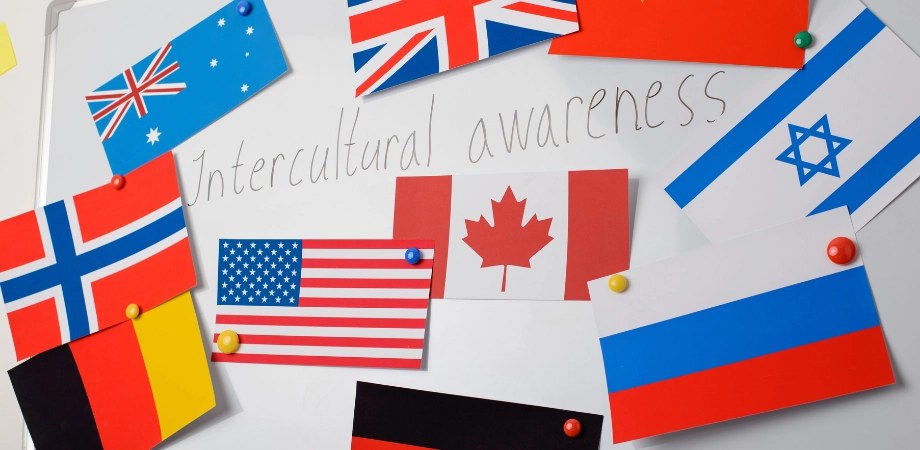Intercultural communication plays a crucial role in achieving global success in today’s interconnected world. Effective cross-cultural collaboration and communication are essential for building strong relationships, fostering cooperation between individuals, organizations, and even countries. The impact of cross-cultural interaction reaches beyond personal interactions; it extends to business success, diplomacy, and international relations. By understanding and valuing diverse cultures and utilizing multilingual SEO services, societies can unlock countless opportunities and overcome potential challenges.
Understanding Intercultural Communication
Intercultural communication is essential for fostering understanding and cooperation among people from different cultural backgrounds. It involves the exchange of ideas, values, and customs between individuals or groups, enriching interactions and broadening perspectives. By effectively navigating the nuances of cultural interaction, we can build more inclusive and harmonious relationships in diverse settings.
Defining Intercultural Communication in the Global Context

Intercultural communication refers to the exchange of information, ideas, and beliefs between individuals from different cultural backgrounds. In today’s globalized world, where interactions between people from diverse cultures are increasingly common, understanding cross-cultural interaction is crucial. It involves navigating through language barriers, cultural nuances, and different communication styles to establish meaningful connections.
The Importance of Effective Intercultural Communication
Effective cross-cultural interaction plays a vital role in fostering mutual understanding and enabling successful collaborations in various fields. In a global context, it allows individuals and organizations to overcome cultural barriers, build trust, and strengthen relationships. By embracing effective cross-cultural interaction, businesses can expand their reach into new markets, diplomats can bridge divides and promote peace, and educators can create inclusive learning environments.
Cultural Dimensions Impacting Communication
Understanding cultural dimensions is essential in comprehending how communication styles vary across different cultures. Several dimensions influence cross-cultural interaction, including:
- High-context vs. Low-context Cultures: High-context cultures rely on contextual cues and non-verbal communication, while low-context cultures prioritize explicit verbal messages.
- Power Distance: This dimension reflects the extent to which power and authority are distributed unequally in a society and affect communication dynamics.
- Individualism vs. Collectivism: Individualistic cultures emphasize personal goals and independence, whereas collectivistic cultures prioritize group harmony and interdependence.
- Uncertainty Avoidance: This dimension measures a society’s tolerance for ambiguity and its preference for clear rules and guidelines.
- Masculinity vs. Femininity: This dimension reflects the degree to which a society values assertiveness, competitiveness, and material success versus nurturing, cooperation, and quality of life.
By recognizing and respecting these cultural dimensions, individuals can adapt their communication styles to bridge cultural gaps and interact effectively in diverse contexts.
The Impact of Culture on Communication

Communication is a fundamental aspect of human interaction, and it is heavily influenced by culture. The impact of culture on communication patterns and behaviors cannot be understated, as cultural norms shape the way people express themselves and understand others. Understanding the role of culture in communication is essential for effective intercultural interactions and building meaningful relationships in diverse settings.
Cultural Norms and Their Role in Dialogue
Cultural norms play a significant role in shaping dialogue and communication styles. Different cultures have varying expectations of politeness, directness, and formality in communication. For example, in some cultures, indirect communication may be valued as a way to maintain harmony and avoid conflict, while in others, direct and assertive communication may be perceived as more effective. Understanding and respecting these cultural norms is crucial for successful intercultural communication, as it helps avoid misunderstandings and promotes mutual understanding.
Non-Verbal Communication Across Cultures
Non-verbal communication, including body language, gestures, facial expressions, and personal space, also varies across cultures. These non-verbal cues often convey important messages and emotions, sometimes even more powerfully than spoken words. For example, a nod or a smile could have different meanings in different cultural contexts. Being aware of these differences and interpreting non-verbal cues accurately is vital for effective communication in cross-cultural interactions.
Cross-Cultural Variances in Communication Styles

Communication styles can vary significantly between cultures. Some cultures may prioritize indirect communication and rely on context and non-verbal cues to convey meaning, known as high-context communication. In contrast, others may prefer direct communication and be more explicit with their intentions and expectations, known as low-context communication. Additionally, cultural differences can influence whether communication is more task-oriented or relationship-oriented. Recognizing and adapting to these cross-cultural communication variances is essential for building trust and fostering meaningful connections across cultural boundaries.
Barriers to Intercultural Communication
In the diverse and interconnected world we live in, effective intercultural communication is essential for building strong relationships and fostering collaboration. However, there are several barriers that can hinder this communication process and lead to misunderstandings. Two significant barriers to cross-cultural interaction are language differences and stereotypes.
Language Differences and Misunderstandings
Language plays a crucial role in communication, and when there are language differences between individuals from different cultures, it can pose significant challenges. Linguistic barriers, such as language proficiency and fluency, can lead to misunderstandings, misinterpretations, and confusion. These barriers can occur in both verbal and written communication, making it necessary to bridge the language gap for effective cross-cultural interaction.
Translation challenges further complicate language differences. Even when individuals have a basic understanding of each other’s languages, nuances, idiomatic expressions, and cultural references may not translate accurately, leading to further miscommunication.
Overcoming Stereotypes and Prejudices
Stereotypes and prejudices are deeply ingrained in society and can significantly impact intercultural interactions. They create biases and preconceived notions that hinder understanding and appreciation of different cultures. Stereotypes, which are generalized beliefs about a particular group, can lead to assumptions and judgments that distort communication. Prejudices, on the other hand, are negative attitudes or opinions based on stereotypes, and they can lead to discriminatory behaviors.
Overcoming stereotypes and prejudices is essential for effective intercultural communication. It requires practicing active listening, being open-minded, and challenging one’s own biases. Developing cultural sensitivity, empathy, and understanding can help individuals break down barriers and foster meaningful connections.
Strategies for Developing Intercultural Communication Skills

To enhance intercultural communication skills, it is crucial to employ strategies that increase understanding and empathy across different cultural perspectives. Empathy is fundamental, as it helps individuals understand and respect cultural differences, fostering meaningful connections. Active listening and demonstrating genuine curiosity about others’ experiences and viewpoints are essential for building trust and rapport. Adapting communication styles to align with cultural norms can also significantly improve interactions. By applying these strategies, individuals can effectively navigate diverse cultural contexts, promoting effective cross-cultural interaction and bridging cultural gaps through enriched connections and interactions.
Intercultural Communication in Business
In today’s globally interconnected world, intercultural communication plays a crucial role in the success of businesses operating across diverse cultural environments. Adapting business practices to different cultural contexts is essential for maximizing success and avoiding cultural pitfalls. Moreover, effective negotiation techniques and intercultural considerations are key to fostering positive and productive business relationships with individuals from diverse cultural backgrounds.
Adapting Business Practices to Different Cultural Environments
When conducting business in different cultural environments, it is important to recognize and respect the unique customs, traditions, and values that shape business practices. Understanding the cultural nuances of each environment helps businesses navigate social protocols, communication styles, and decision-making processes effectively.
For example, in some cultures, building personal relationships before conducting business is crucial, while in others, business transactions occur more swiftly and formally. By adapting business practices to align with cultural expectations, companies can establish trust, demonstrate respect, and forge meaningful connections that lead to successful collaborations.
Negotiation Techniques and Intercultural Considerations
Negotiations in global business require a keen understanding of intercultural communication to navigate varying negotiation styles influenced by cultural differences. Recognizing whether communication is direct or indirect, decision-making is hierarchical or egalitarian, and whether approaches are individualistic or collectivist is crucial.
This adaptability enhances dialogue, reduces misunderstandings, and ensures win-win outcomes. Additionally, cultural intelligence and empathy towards differences in communication styles, body language, and traditions like greetings and gift-giving are vital. By integrating these cross-cultural interaction strategies, businesses can effectively manage diverse cultural environments and secure successful global interactions.
Technological Advances Affecting Intercultural Interactions

Technological advancements have transformed intercultural communication by facilitating connections across global boundaries through social media, video conferencing, and digital language learning platforms. These tools enable individuals to share cultural perspectives and collaborate in real-time, despite geographical distances. However, challenges such as potential miscommunications due to cultural and language differences remain. Addressing these issues is crucial as technology continues to bridge cultural gaps and enhance global interactions, making cross-cultural interaction more dynamic and accessible.
Challenges and Opportunities in Intercultural Communication
Intercultural communication presents both challenges, such as differences in communication styles and language barriers, and opportunities, like innovation and global perspective expansion. By developing cultural sensitivity and embracing diversity, individuals and organizations can navigate misunderstandings and tap into diverse viewpoints that enhance creativity and problem-solving. Effective strategies like active listening and cultural sensitivity training are essential in overcoming these challenges and fully leveraging the benefits of cross-cultural interaction in an increasingly interconnected world.
Intercultural Communication as a Pillar for Global Success
Throughout this article, we’ve emphasized the crucial role of effective intercultural communication in fostering global success. By appreciating diverse cultural perspectives, individuals enhance trust and collaboration across borders, key in fields like business, diplomacy, healthcare, and education. As we engage more deeply in our globalized world, prioritizing the development of cross-cultural interaction skills becomes essential for building connections that lead to both personal and professional achievements, ultimately contributing to a more harmonious global community.



